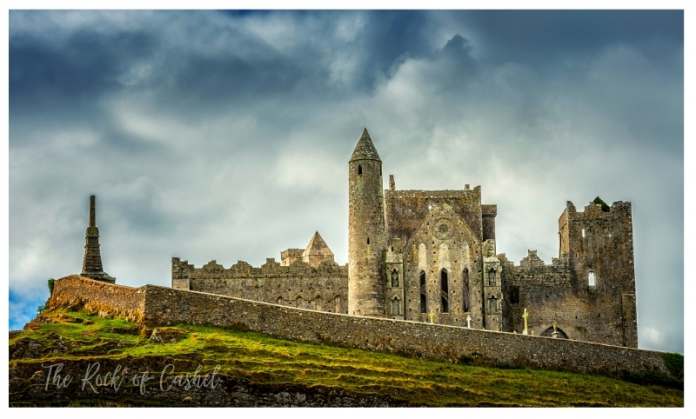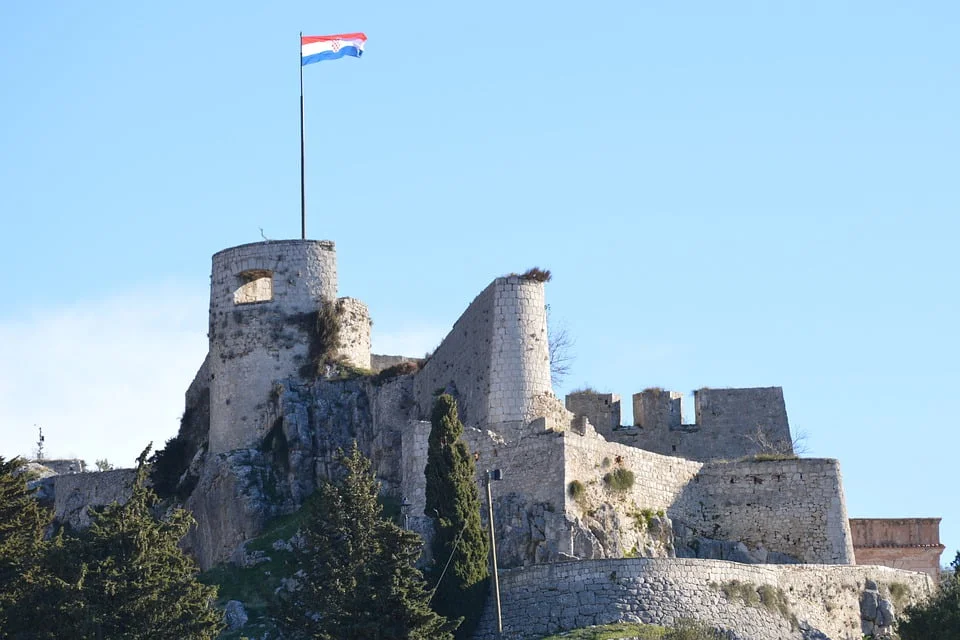The Rock of Cashel is a beautiful elevated landform with immense historical significance. It was home to quite a number of medieval fortresses and castles along with the most picturesque sites.
From atop the rock, you can take in the mesmerising view of the stunning green plains of County Tipperary while experiencing the essence of major events in history and relishing some of the finest architectural marvels of Europe. On top of the St. Patrick’s Rock, from the Cathedral, which was used as a place for worship till the mid-1700s, to Cormac’s Chapel, which was built in the 12th century and contains the earliest Romanesque art in Ireland, the space is cluttered with incredible sites to visit.
Table of Contents [show]
According to Irish mythology and folktale, the rock originated in the mountain called the Devil’s Bit which is situated 20 miles away from Cashel. It is believed that Satan took a bite of the mountain and spat it to where the Rock of Cashel is currently located after being banished from a cave by Saint Patrick.
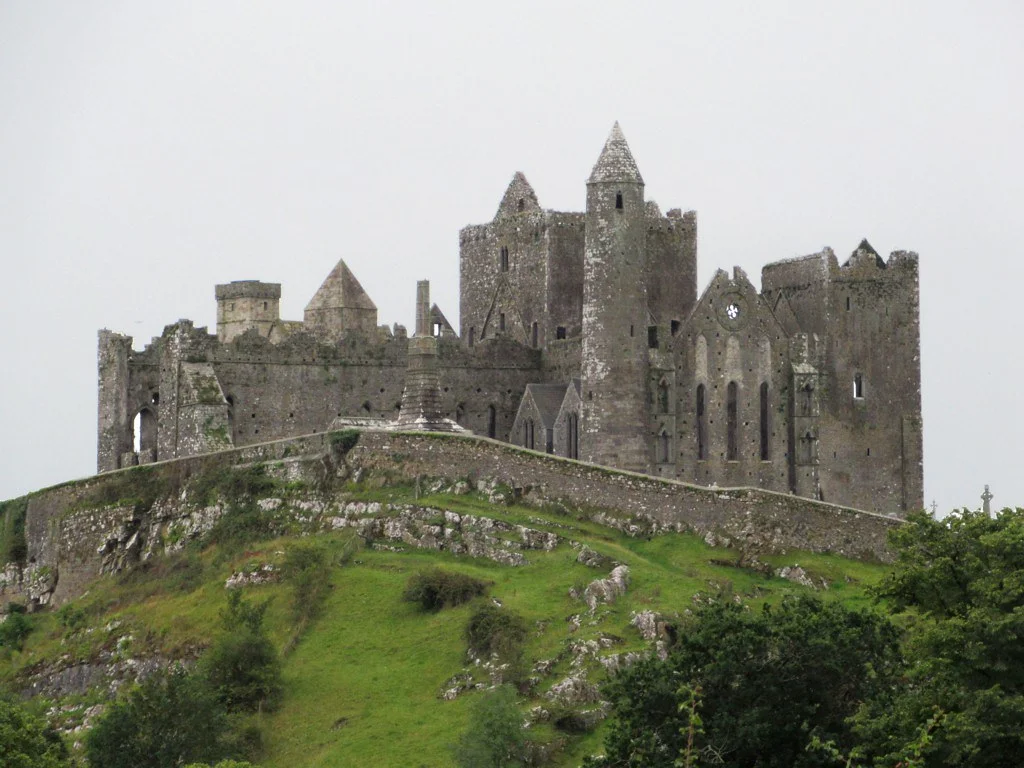
Frequently Asked Questions
Where is The Rock of Cashel Castle Located?
The Rock of Cashel is situated in the town of Cashel, in County Tipperary, Ireland.
When was The Rock of Cashel Castle Built? Who Build It?
The earliest structure found atop the Rock of Cashel is a round tower which can be dated back to around the year 1100. The origins of the structure are unclear. A Romanesque church and Gothic cathedral were constructed upon the rock during the 12th and 13th centuries.
When is The Best Time to Visit the Castle?
The location is popular among tourists and is particularly busy during the summer. As such, the summer months are great for visiting the site but one must be mindful of the fact that it may be crowded during this time. If you want a quiet, individual retreat – you may want to go in spring or early autumn.
What Other Monuments are Located Nearby?
There are numerous places for you to visit close to the Rock of Cashel. Holy Cross Abbey is a Christian pilgrimage site with immense historical value. The building is mesmerizing to look at and fascinating to visit. Cahir Castle is another site worth visiting close to the Rock of Cashel. This fortress is a powerful defensive structure built in the thirteenth century and is a true architectural marvel. Swiss Cottage is also a beautiful site for you to visit if you wish to behold a fairy-tale-esque landscape.
FOR HISTORY | BEAUTIFUL IMAGES | INTERESTING FACTS | TRAVEL TIPS
Early History
Irish Iron Age (4th – 12th century)
The Rock of Cashel was considered a symbol of power in ancient Ireland and therefore was held by kings and rulers. In the 4th century, it was under the hold of the kings of Munster, a monarchic establishment in ancient Ireland.
They built a fortress on the site and ruled over a lot of the surrounding area. The King of Munster was converted to Christianity by Saint Patrick on the very site in the 5th century. By the late 10th century, the kingship was taken from the Eoganacht clan by the kings of Dal Cais. In the early 12th century, Muirchertach Ua Briain, the High King of Ireland donated his palace atop the Rock of Cashel to the church.
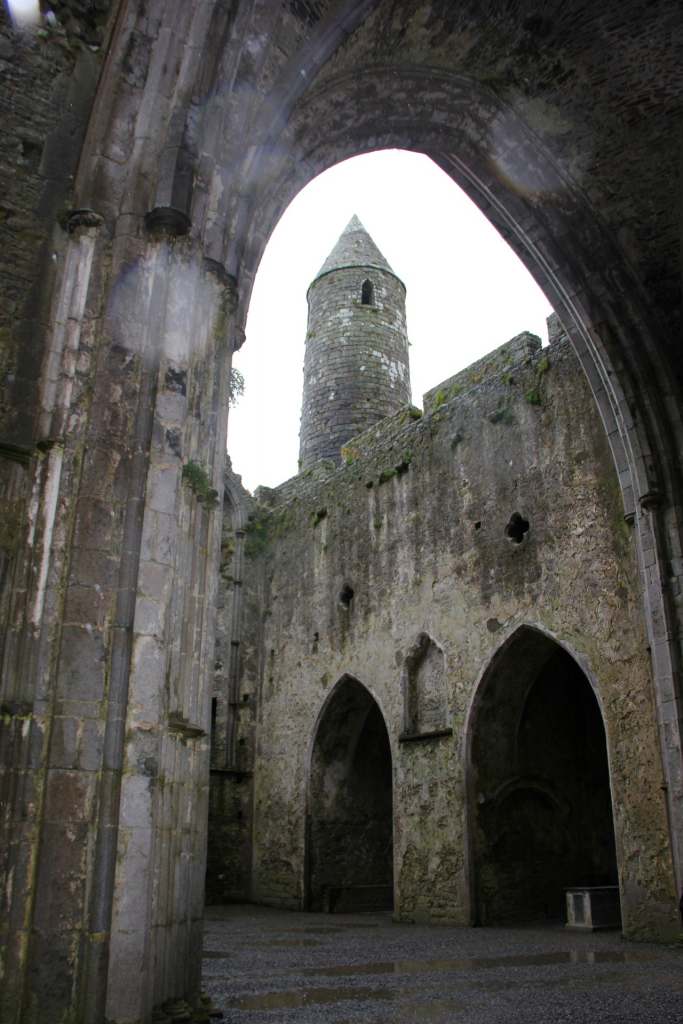
12th Century Onwards
In the 12th century, Ireland was divided into territorial dioceses. The Rock of Cashel became a site of religious significance after Rome approved the appointment of archbishoprics in several points across Ireland, including at Cashel. A cathedral was constructed on Cashel soon after. Several buildings followed, including the Cormac’s chapel, The Choir, The Nave, and the Hall of the Vicars Choral.
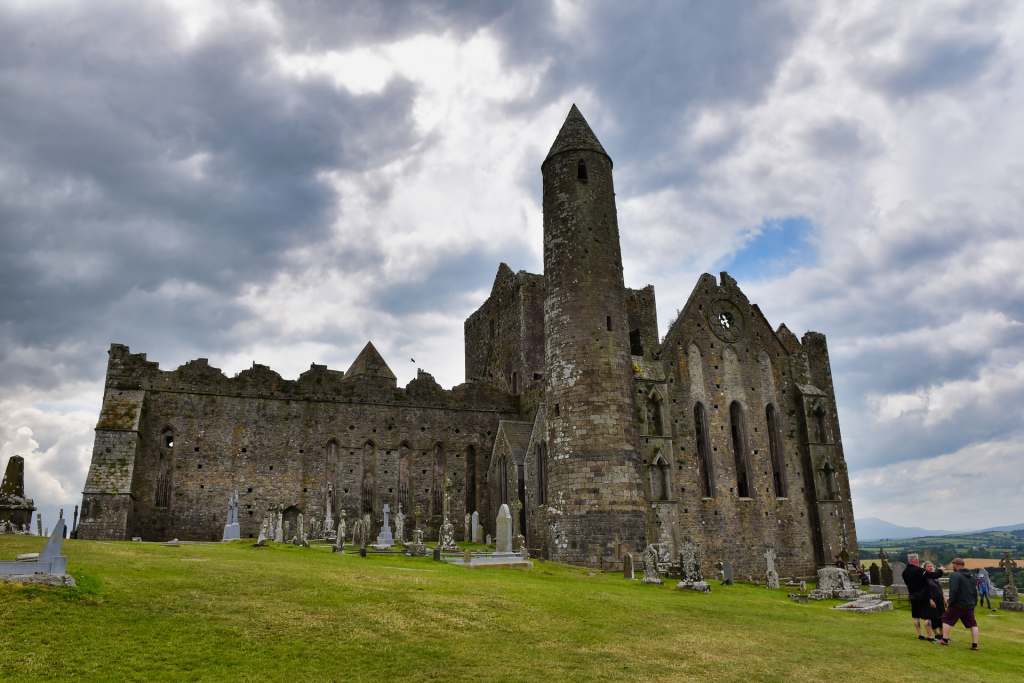
Fifteenth Century & Onwards (1494-1874)
The rock has also stood through some violent times in history. The cathedral on the Rock of Cashel was set ablaze in 1494 by the 8th Earl of Kildare, Gerald Fitzgerald just to exact revenge on his sworn enemy, Archbishop David Creague, who was inside the cathedral.
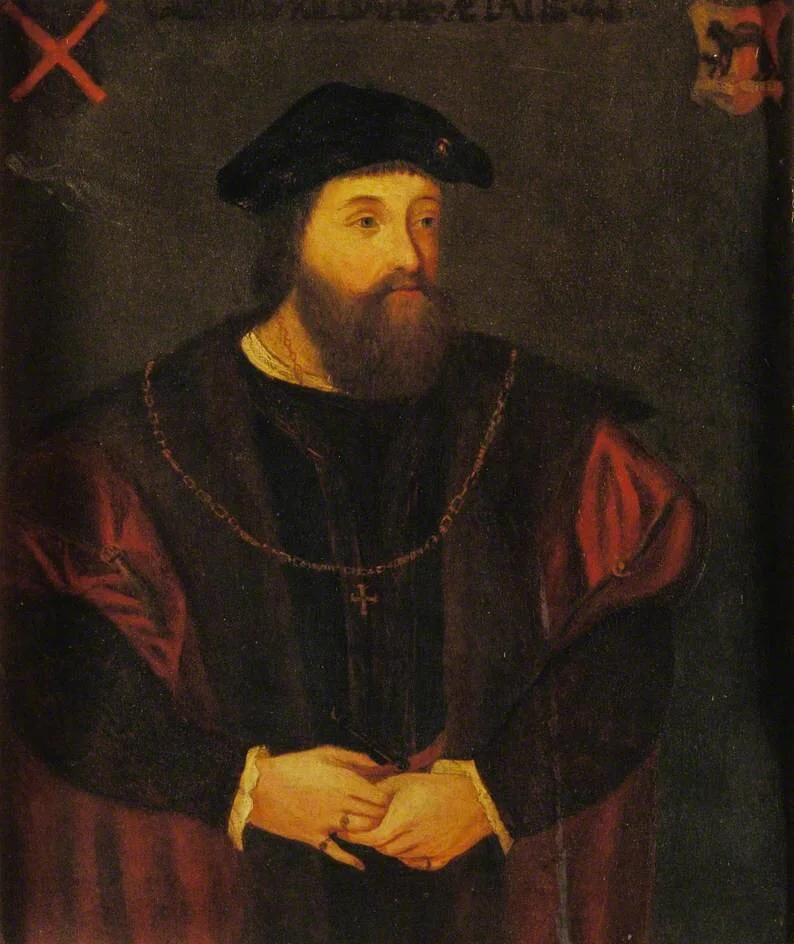
Lord Inchiquin attacked the town in 1647 with Cromwellian forces, asking for a sum of 3000 pounds. Upon having denied his demands, his forces killed over 3,000 people, including men, women, and children in a show of unimaginable brutality.
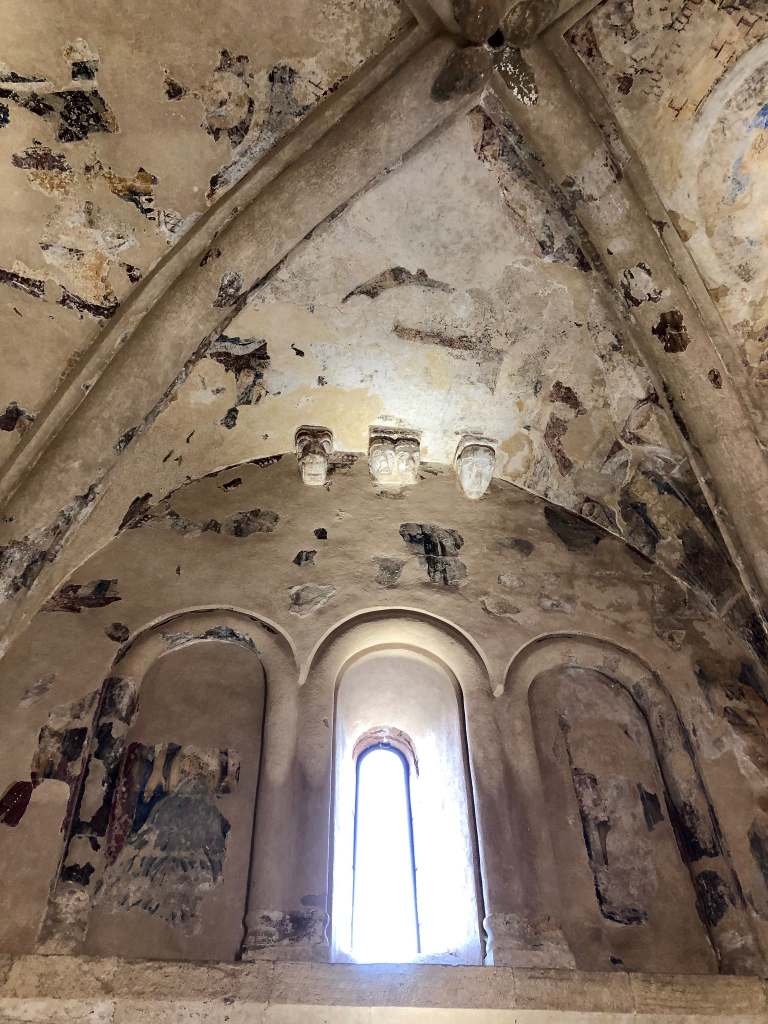
The round tower also has damage from artillery fire from wars of the past. The Office of Public Works performed a major renovation in 1874 to preserve the site.
Revisit More Historic Places Below or Read Further
Current Times
In the present day, the Rock of Cashel is a popular tourist attraction in Ireland with historically significant architectural structures such as Cormac’s Chapel, The Cathedral, and the round tower. It draws a large crowd each day, particularly during the summer season. The site is open from 09:00 a.m – 4:45 p.m currently.
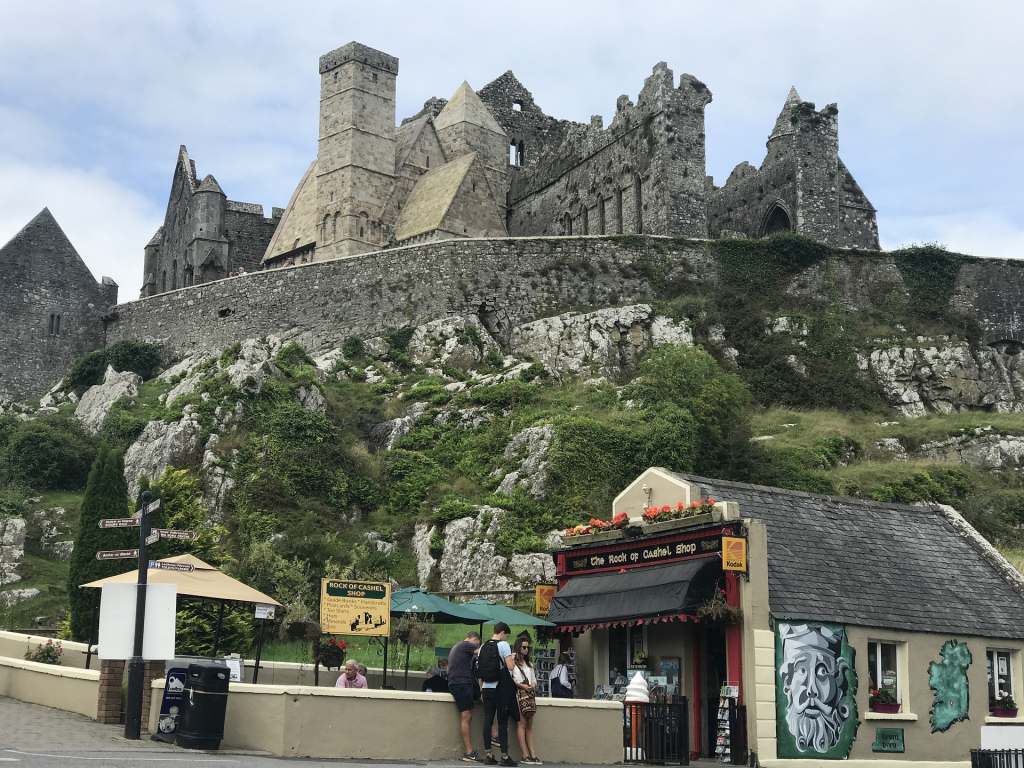
Interesting Rock of Cashel Castle Facts
- Queen Elizabeth II paid a visit to the Rock of Cashel in 2011 during her visit to Ireland.
- The Rock of Cashel has a history dating more than 1000 years back.
- The site is 200 feet high and offers stunning panoramic views of the surroundings.
- The tallest building on the Rock of Cashel, the round tower, has a height of 90 feet.
- According to Irish mythology and folktale, the rock originated in the mountain called the Devil’s Bit which is situated 20 miles away from Cashel. It is believed that Satan took a bite of the mountain and spat it to where the Rock of Cashel is currently located after being banished from a cave by Saint Patrick.
Visiting Rock of Cashel Castle – Tips and Tricks
The Rock of Cashel is a sight of many marvels; if you want a true Irish experience, then you definitely need to visit the architectural ingenuities and the ruins left upon this site. If you’re planning a trip soon, here’s all you need to know:
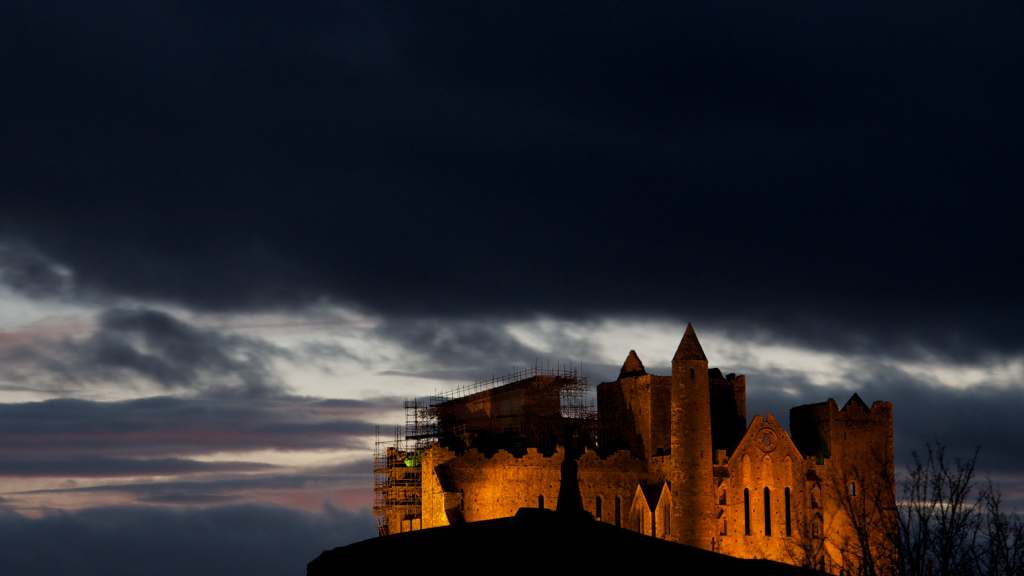
How to get to Rock of Cashel Castle?
The Rock of Cashel is around a 2-hour drive from Dublin via the M7 and M8, it should cost you around €19-€27 ($22-$32 USD) in terms of fuel. You can also take the bus from Heuston station which departs four times a day and travels via the X8, to the Cashel Stop 255231. You can then take an 8-minute walk to the site. The bus ride should cost you around €14-€21 ($17-$25 USD).
If you wish to take the train, you can board at Heuston, get off at Thurles after a 1 hour 15-minute ride, and then take a taxi ride to the Rock of Cashel. The train fare would be around €14-€19 ($16-$23 USD) while the taxi ride would cost you around €34-€47 ($40-$55 USD).
Ticket Prices, Visiting Hours & Travel Tips
Information was checked & updated on October 4, 2023.
The entrance ticket to the site costs just €8 ($9 USD) and you can either tour the place by yourself at your own pace or take a guided one, they are conducted at regular intervals by well-informed tour guides. The guides would give you a thorough detail of the history and make sure you don’t miss out on anything significant.
For groups and seniors, the ticket is priced at €6 ($7 USD). For children and students, it costs €4 ($5 USD), and for a family, you can get a ticket for €20 ($24 USD).
Note: Because of limited access during Covid, visits are both scheduled and free–but prior scheduling online is mandatory. There is no statement on how long this will be in effect.
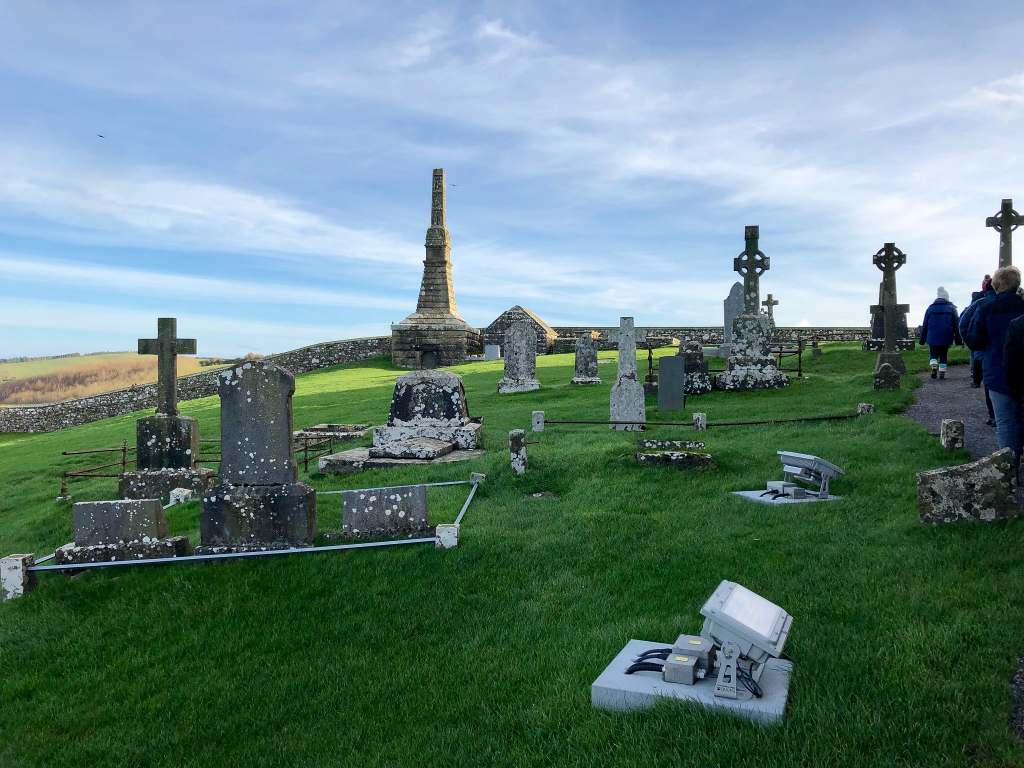
How Long Will It Take to Tour Around?
It should take you a maximum of around one and a half to two hours to tour the whole site.
Up to Date Information
For up to date ticket prices and visiting hours visit the official website: https://heritageireland.ie/places-to-visit/rock-of-cashel/
Some words of advice and tips:
- Book your ticket online before visiting.
- If you wish to avoid crowds, visit in the early morning around 9 a.m.
- You may park your car at the parking lot situated at the base of the rock. There is, however, a parking cost.
- You should also visit Cashel Town, a beautiful historic town located close by where you can take a pleasant stroll and check out St John’s Cathedral, Hore Abbey, Dominican Abbey, and various other sites which are a fascinating reminder of the site’s rich history.
- Carry some spare money if you wish to avail the gift shop at the reception. The store has plenty of little trinkets and souvenirs for you to purchase! Bear in mind that the store doesn’t have a credit card payment facility, so you should have cash in hand.
- If you visit in summer, you may be treated to buskers showcasing traditional Irish dancing and/or music on the walkway up the hill.
- You may also take a tour of the cemetery located close to the cathedral, which is marked by beautiful tall crosses with intricate engravings as per medieval customs.

